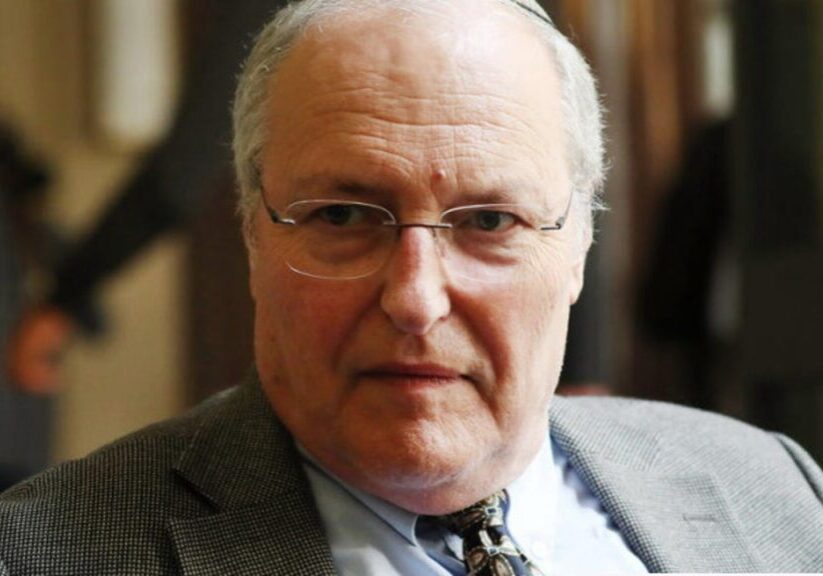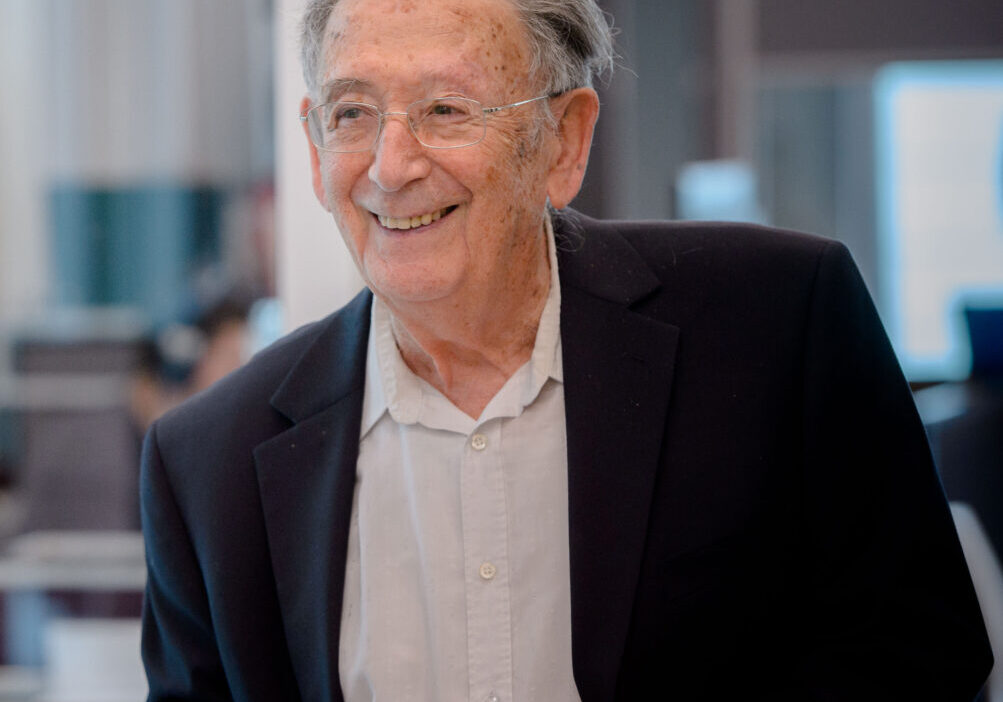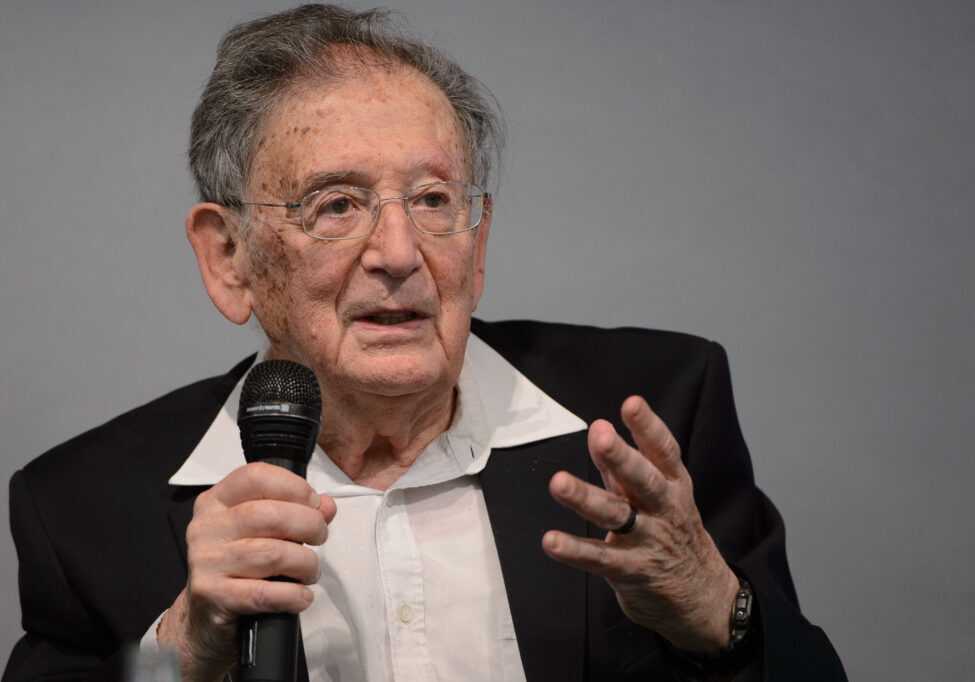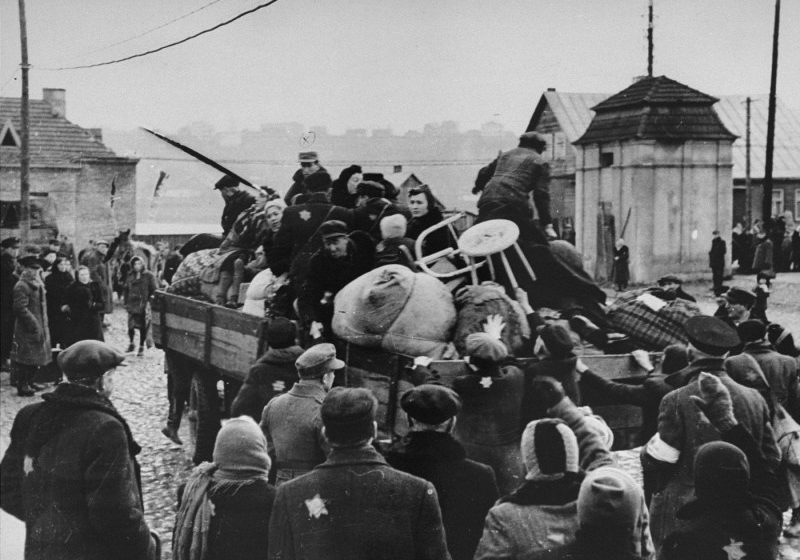Australia/Israel Review
Essay: Before the Holocaust
May 4, 2023 | Haviv Rettig Gur
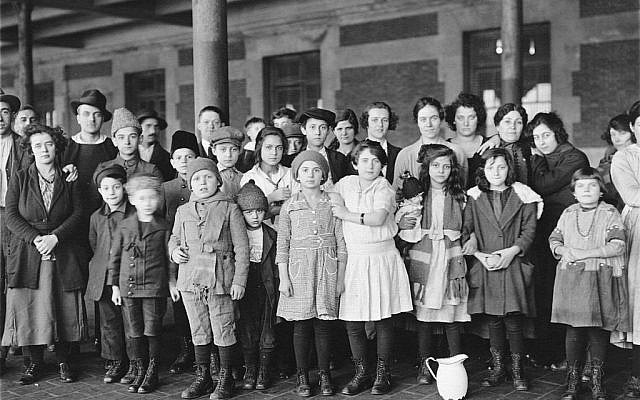
Nazi antisemitism was the culmination of a widespread trend
Western Holocaust commemorations have a peculiar uniformity to them. They speak of Nazism as a warning against intolerance and chauvinism; they frame the genocide as a single event with a clear beginning and end that for all its cataclysmic scope and impact was nevertheless short-lived.
This way of remembering is a tragedy in its own right. It downplays a long history of persecution, ignores the Holocaust’s deeper roots in favour of the emotional salve of simplistic moral lessons, and detaches the specific gas chambers and killing fields from a broader history of which they are an apotheosis, not an aberration.
There is a more Jewish telling of the Holocaust, one that notices that the 20th century was already among the bloodiest periods in Jewish history before the start of the genocide. It includes the flight of millions of Jews out of Europe and the way those who remained were delivered into the Nazi embrace by Western immigration quotas. It is a version of the story that begins not in 1939 or 1941, but in 1880.
Jews began their mass flight from Europe following the assassination of Czar Alexander II in 1881, an event that sparked mass popular pogroms in the Russian Empire and saw new laws enacted against its already oppressed Jewish subjects. These pressures from above and below slowly increased, culminating in the massacres of the Russian Civil War of 1918-21, which claimed the lives of well over 100,000 Jews.
Most of the Jews who fled westward in the six decades that preceded the Holocaust went to the United States. Their story is often swallowed up in the larger tale of American immigration, of millions of other Europeans who sought a new life and new opportunities in America. But the Jews were not like the Poles, Italians or Germans who arrived with them in New York harbour.
Polish or German families sent their young men ahead of the family to establish themselves and make the family’s arrival more comfortable. Italians who found the immigrant life too difficult returned to their home country in large numbers.
But Jews behaved differently. Once they decided to leave, they sold everything, boarded ships and arrived on America’s shores as whole families. They knew they would not be returning.
During the Panic of 1907, 300,000 Italian immigrants returned home to Italy. What would have happened, British Jewish author Israel Zangwill asked in 1908, if 300,000 Jews were to do the same?
“What home does the Jew have to return to? He has burned all his bridges. Often he was made to flee without a passport. He cannot return,” Zangwill said in a speech in London cited in German historian Gotz Aly’s book Europe Against the Jews.
This was no idle comment. European immigrants returned to their home countries in huge numbers between 1908 and 1925: 57% of Italians, 40% of Poles, 64% of Hungarians, 67% of Romanians and 55% of Russians.
Among Jews, the figure was just 5%.
Other immigrants were seeking a better life; the Jews were running away.
In a 1908 pamphlet, the German author Eugene Doctor wrote about the antisemitic hatred driving the Jews westward and fretted that their mass arrival in America would spark an antisemitic wave in their new home.
If a solution to this Jewish quandary wasn’t found, he warned, the situation in the east would “come to a boil… One fine day, even this [situation] will be swept away, and all we’ll have will be the revival of the old refrain: ‘The Jew must be burned alive.’”
As the decades passed, Europe would slowly but steadily become uninhabitable to Jews. Between the antisemitic May Laws passed by the Czar in 1882 and the Nuremberg Laws passed by the Nazis in 1935, many more European states implemented an ever-tightening regime of restrictions on Jewish work, citizenship and education that would keep Jews out of professions, universities, and ultimately entire countries.
In the summer of 1938, before any German occupier forced its hand, Poland passed a law stripping citizenship from any Jew who hadn’t lived in the country for the previous five years. The Nazis, fearful the move would leave them saddled with now-stateless Polish Jews, rounded up 17,000 of them living on German soil and drove them to the Polish border, where they lived in a kind of stateless limbo, refused entry to either Germany or Poland, until the start of the war.
It was the same story once the war was underway. Romanian dictator Ion Antonescu didn’t need Nazi propagandists to convince him that the Jews were a problem that needed solving. After the Nazi declaration of war on the Soviet Union, he was thrilled by the opportunity offered by the chaos engulfing Europe. “Romania needs to be liberated from this entire colony of bloodsuckers who have drained the life essence from the people,” he declared of the country’s Jews. “The international situation is favourable and we can’t afford to miss the moment.”
As the pressure on the Jews grew, so did Western fear of them flooding in as refugees.
In 1910, when the US had already absorbed some two million Eastern European Jews, New York Immigration Commissioner William Williams ended his annual report with a warning: “The time has come when it is necessary to put aside false sentimentality in dealing with a question of immigration, and to give more consideration to its racial and economic aspects and in deciding what additional immigrants we shall receive, to remember that our first duty is to our country.”
American immigration officials working under Williams began turning back more and more Jews arriving in New York, even as the killings and persecution grew worse back in Eastern Europe. Despite their efforts, the Jews kept coming.
In 1921, the US Congress decided to act. It passed the Emergency Quota Act and then the 1924 Quota Act, severely reducing Jewish immigration from over 120,000 per year to less than 3,000 a decade later.
America, and after it Britain, Canada, Argentina and countless other nations, systematically closed their doors to the Jews and kept them closed right through the Holocaust.
The Holocaust, in other words, was understood by the Nazi leadership as a German solution to a problem felt by all. No one wanted the Jews, all sought ways to be rid of them. It was only when the West closed its doors – when the Jews became, in Hannah Arendt’s word, “undeportable” – that Europeans began to contemplate and even embrace the radical Nazi solution to what many saw as everyone’s shared problem. Millions of people could be snuffed out of existence by the German genocidaires because they were unwanted everywhere and protected by no one.
And much of Europe participated.

Hungarian Jews arriving at Auschwitz, 1944 (Public Domain); Nazi Einsatzgruppen murdering Jews in Latvia, 1941 (Yad Vashem)
This is a contentious point in today’s Europe, but a true one nonetheless. Many nations protest that they did not actively join in the murders; few can claim they did not restrict Jews’ lives, persecute them, hand them over to their executioners and prevent survivors from returning to their homes after the war. All took part in the larger cleansing, even if only some took upon themselves the responsibility of direct killing.
There were, of course, countless individual Europeans who risked life and limb to save Jews, and even some political and religious leaders who did so. But these are almost everywhere the exceptions. As eminent historian Saul Friedlander has shown, no major social or political group anywhere in Europe rallied collectively to the Jews’ defence.
The Germans planned and initiated the Holocaust. But German efforts could not have succeeded without massive collaboration – and in fact in the few places where such help was denied them, they failed.
In Belgium, the Nazis were able to round up nearly two-thirds of the Jews of Flemish Antwerp (65%), where local police collaborated with the occupiers. In French-speaking Brussels, where officials and citizens refused to help, the Nazis’ success rate was halved (37%).
In Hungary, the government enthusiastically deported 437,000 Jews to Auschwitz in the summer of 1944 in an operation wholly run by Hungarians. But these deportees were rural Yiddish-speaking Jews from the provinces. When the Nazis demanded Budapest’s assimilated, middle-class Jews, the Hungarian government baulked. Its refusal left the Nazis helpless to implement any large-scale killing in the capital. Most of Budapest’s Jews would survive the war.
The same pattern emerges in Romania, Bulgaria, Greece and elsewhere. Greek collaboration allowed the Nazis to exterminate the Jews of Salonica, while Greek refusal to help meant the same could not be done to the Jews of Athens.
The genocide policy was successful only where locals cooperated. Alas, locals cooperated in the vast majority of places.
As Aly notes, “When we examine the daily practices of persecution in various countries, we cannot fail to note the ease with which German occupiers were able to enlist local nationalist, national-socialist, and antisemitic movements to serve their ends… There is no way we can comprehend the pace and extent of the Holocaust if we restrict our focus to the German centers of command.”
Unwanted
This long, slow, purposeful destruction of European Jewry – the transformation of Europe into a continent literally uninhabitable to Jews – didn’t begin with the war, and didn’t end with its conclusion.
After V-E Day came the now all-but-forgotten story of the Jewish DPs, the “displaced persons” who would languish for years on German soil, imprisoned behind barbed wire by the American and British occupation forces for the simple reason that no one on Earth would take them in.
It was a postscript to the Holocaust that for many survivors encapsulated its deepest truth: That Auschwitz was not the exception to the European Jewish experience but merely its logical conclusion.
On May 8, 1945, the day the war ended, Germany was “in free fall; chaos reigned; national, regional, and local military, police, and political authorities had abandoned their posts,” writes historian David Nasaw. “There was, literally, no one directing traffic, no one policing the streets, no one delivering the mail or picking up the garbage or bringing food to the shops, no one stopping the looting, the rape, the revenge-taking … millions of homeless, ill-clothed, malnourished, disoriented foreigners: Jewish survivors, Polish forced laborers, former Nazi collaborators… jammed the roadways, the town squares and marketplaces, begging, threatening, desperate.”

Jewish refugees in a ‘displaced persons’ camp in Germany after World War II (Public domain)
And among these wretched souls, the Jews could be identified with ease, “distinguishable,” writes Nasaw, “by their pallor, emaciated physiques, shaved heads, lice-infested bodies, and the vacant look in their eyes.” They had been the worst treated. All Germany’s slave laborers had suffered. The Jews alone, by order of Hitler’s deputy Heinrich Himmler himself, were deliberately worked to death.
The fall of the Reich left millions of people from across the European continent displaced on German soil. With the war over, the Allies’ first priority was to repatriate anyone who could manage the journey home. At checkpoints throughout Germany, Allied soldiers would collect the wandering millions and deliver them to processing sites established in nearby towns. Millions hitchhiked, stole bicycles or vehicles or simply walked to their former homes in France, Holland, Italy, Belgium, Poland and elsewhere.
By Oct. 1, “more than 2 million Soviets, 1.5 million Frenchmen, 586,000 Italians, 274,000 Dutch citizens, almost 300,000 Belgians and Luxembourgians, more than 200,000 Yugoslavs, 135,000 Czechs, 94,000 Poles, and tens of thousands of other European displaced persons… had been sent home,” writes Nasaw.
Yet as 1945 drew to a close, the Allies came to realise that some of the war’s survivors, who would come to be called “the last million”, could not go home.
Hundreds of thousands of Polish Catholics were afraid of what awaited them in their violence-wracked, Soviet-dominated country. Hundreds of thousands more Ukrainians, Lithuanians, Estonians and Latvians could not return to countries now under Soviet rule because of their active collaboration in the Nazi war effort and occupation regimes.
And then there were the Jews, the survivors of the slave labour camps within Germany and over 200,000 survivors flowing in from the East who had tried returning home and been pushed out by violent neighbours and even pogroms carried out by those who’d felt nothing but relief at their disappearance.
In 1946, the US and Britain established the International Refugee Organisation (IRO) and tasked it with resettling the last million in new homelands. The IRO quickly got to work marketing the remaining DPs to Western and Latin American nations as a solution to the dire shortages of post-war labourers they needed to help rebuild their economies.
It worked. Over the course of 1946, more than 700,000 DPs would be offered new homes by IRO member nations – a generosity of spirit that came with one immense caveat.
The first to be plucked from the dismal DP camps were the healthiest and blondest and Protestant: Latvians and Estonians who had mostly spent the war as willing participants in the Nazi war machine. They were prioritised not despite their collaboration with the Nazis but because of it. To Western recruiters, it proved their anti-Communist bona fides.
The recruiting nations then turned to the Catholic and Eastern Orthodox DPs, primarily Ukrainians, Poles and Lithuanians who were often unwilling labourers in Nazi war factories but were nevertheless cared for well enough to emerge healthy from the experience.
Then the recruiters swiftly closed up shop and left the camps, leaving behind the last 250,000 DPs to spend the next two years still imprisoned by their erstwhile liberators.
These were, of course, the Jews.
“On May 8, the war in Europe ended,” survivor Hadassah Rosensaft would write in her memoir. “I have often been asked how we felt on that day… Of course, we were glad to hear the news of the Allied victory, but we in [concentration camp-turned-DP camp Bergen] Belsen did not celebrate on that day… I have seen a film on television showing the world’s reaction to the end of the war. In Times Square in New York, in the streets of London and Paris, people were dancing, singing, crying, embracing each other. They were filled with joy that their dear ones would soon come home. Whenever I see that film, I cry. We in Belsen did not dance on that day. We had nothing to be hopeful for. Nobody was waiting for us anywhere. We were alone and abandoned.”
It was no mere oversight that left the Jews trapped in the land of their murderers, and sometimes in the very concentration camps from which they had been “liberated”. It was not ignorance of the problem or the chaos of a frenzied reconstruction that left them ignored by the world as the years passed.
Even as they languished, a frenetic debate was underway in America. Many voices, including Jewish groups and many Christian denominations, called to lift the old quotas and let these last survivors into America. But a coalition of midwestern Republicans and southern Democrats in Congress adamantly refused. The Jews, it was said, were closet communists. Quotas for Eastern Europe, the nations from which the DPs hailed, remained in the immediate post-war period astonishingly low: 6,524 per year from Poland, 386 from Lithuania, 236 from Latvia, and 116 from Estonia.
Congress would finally pass a new displaced-persons bill in June 1948, a month after Israel had declared independence and begun to take in the DPs en masse.
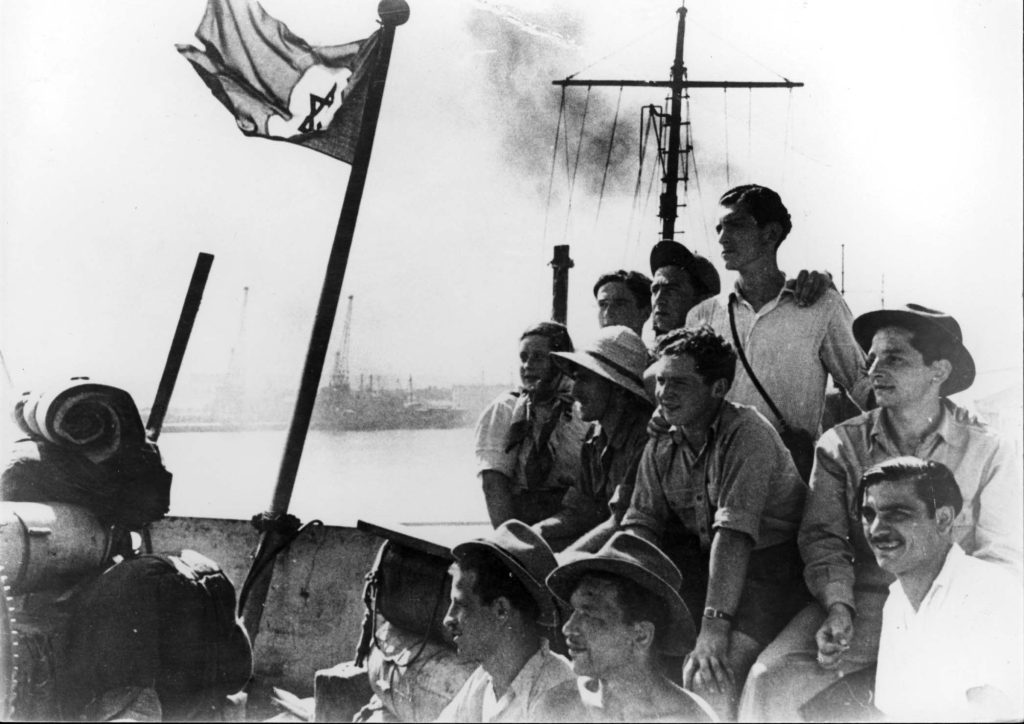
Jewish immigrants on the deck of the Pan York on the day they arrived in Israel, August 14, 1948 (Yad Vashem Archives)
The long Holocaust
The Holocaust is too large and complex to allow for only a single narrative of what it means. To the West, including many Western Jews, it is usually understood as a cautionary tale about the terrible results of human intolerance. To drive home this point, teenagers are taken to see museums, death camps and cattle cars.
But a study of the broader context in which the Holocaust took place – the context without which it could not have taken place – upends this easy moral narrative. Auschwitz isn’t an answer to any useful question. Auschwitz is the question.
The answer – one answer – begins to take form only when one steps back from these totems of Holocaust commemoration, from the camp incinerators and Ukrainian killing fields, from the Nazi rallies and the partisan fighters’ resistance poems. It emerges from a close reading of what came before the genocide, the suffering and marginalisation that are all but forgotten now, vanished like the millions of murdered souls into the vast shadow cast by what was to come.
The Nazis were less original than anyone wants to admit. The propaganda machines, the anti-Jewish legislation, the fever dream of a Jew-free Europe – in all these the Nazis were copying ideas and policies laid down by others. Where they did innovate, especially in the technology of the genocide, their success depended on the eager collaboration of a great many Europeans in almost every nation and province of the continent.
For all its incomprehensible horror, the focus on the murder itself paradoxically serves as a kind of psychological salve, a way to forget how dozens of nations, including the free Anglophone peoples of the West now host to most of the world’s diaspora Jews, were unabashed participants in the vast, generations-long corralling of millions of helpless Jews to their ultimate destruction.
The Nazis were ultimately defeated, but not before they’d won their war against the Jews of Europe. It’s a point that might seem monstrous at first glance but becomes unavoidable when one looks at the longer history in which the Holocaust is embedded: To the nations whose Jews were destroyed, that destruction came as a relief.
In Eastern Europe after the war, many surviving Jews were not allowed back to their homes nor treated better than they’d been before. In the West, any meaningful exploration of the broader context and culpability of the nations of Europe and the Anglophone West was quickly set aside in favour of a thin, unthreatening moralism.
Only the Jews are left to remember that when their brethren stood before the open furnace, no other nation or religion, class or institution reached out a hand in rescue.
Haviv Rettig Gur is the Times of Israel’s senior analyst. © Times of Israel (www.timesofisrael.com), reprinted by permission, all rights reserved.
Tags: Holocaust/ War Crimes

